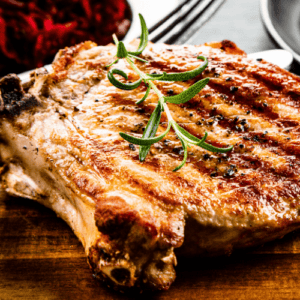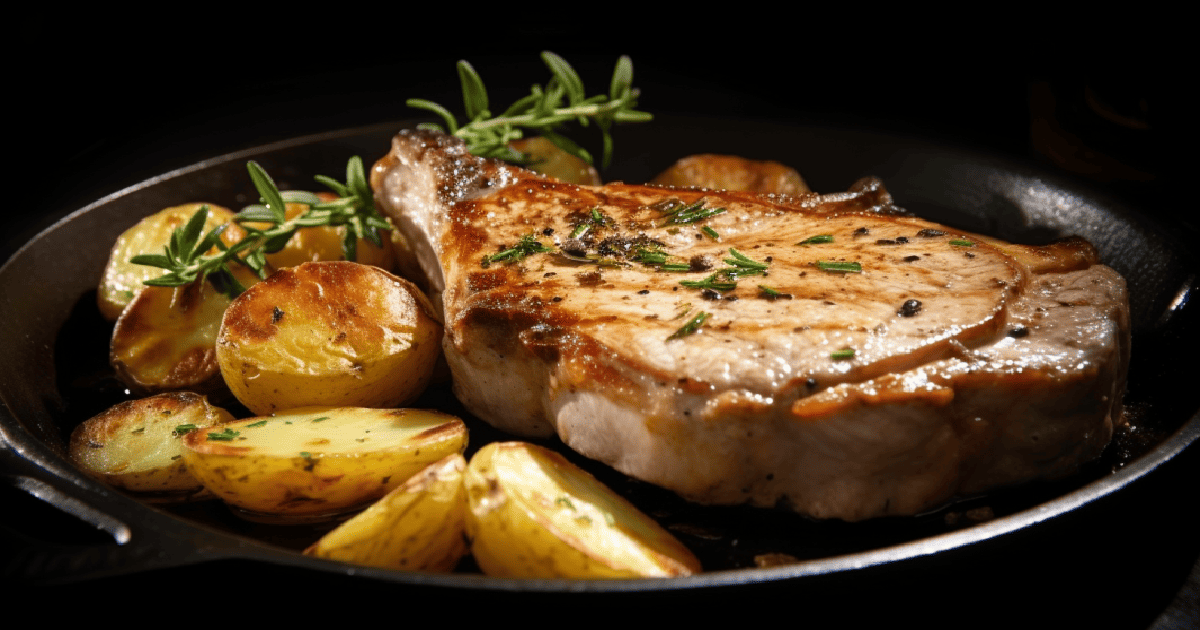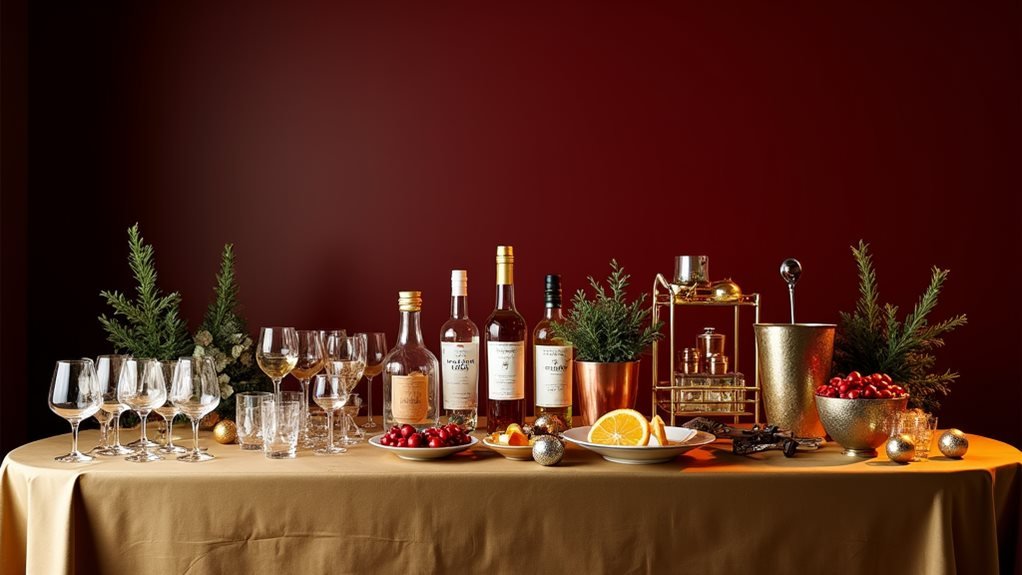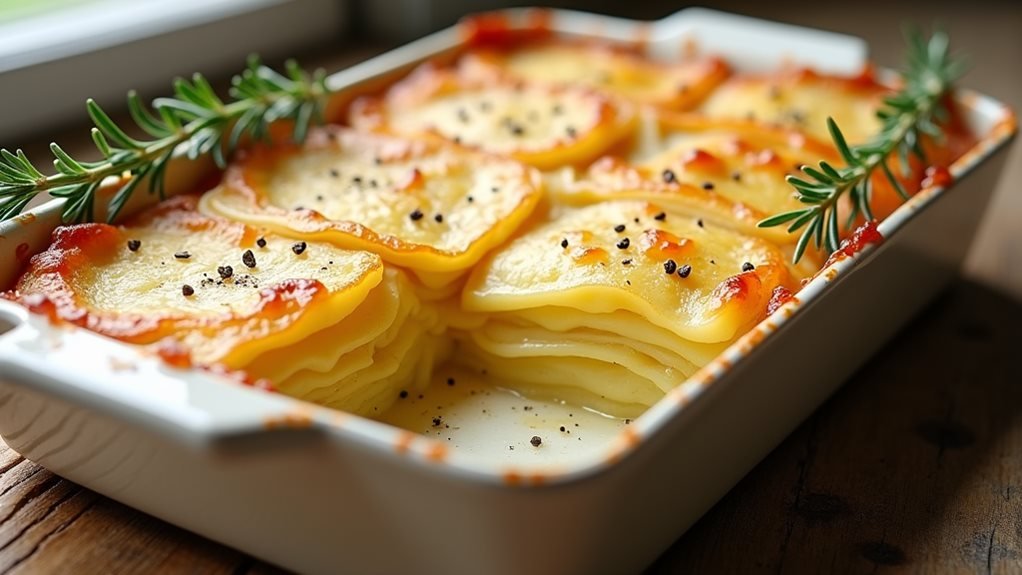Discover the culinary genius behind Gordon Ramsay Porks Chop and unlock the secret to achieving succulent, crowd-pleasing perfection in every bite. These expertly crafted pork chops promise to elevate your home dining experience, combining the robust flavors of Calvados, aromatic spices, and the subtle tang of mustards in a way only the world-renowned chef can envision.
Whether you’re aiming to dazzle dinner guests or indulge in a sophisticated meal at home, this step-by-step guide is your ticket to tender, juicy pork chops that are bound to become a staple in your recipe repertoire. Let’s delve into the nuances of this signature dish and reveal the techniques that lead to impeccable results every time.

Gordon Ramsay Pork Chops Recipe
Ingredients
- 4 Pork Chops (8-ounce each, bone-in)
- Salt Pepper (for seasoning)
- Olive Oil
- Butter (a few knobs)
- 2 cloves Minced Garlic
- 2 Chopped Shallots
- 1/4 cup Calvados (French apple brandy)
- 1 cup Chicken Stock
- 1/2 cup Heavy Cream
- 1 tablespoon Dijon Mustard
- 1 tablespoon Whole Grain Mustard
- 2 Granny Smith Apples, peeled, cored, and sliced
- 2 tablespoons Brown Sugar
- 2 Star Anise pods
- 1 Cinnamon stick
- Braised Cabbage (for serving)
- Creamed Potatoes (for serving)
Instructions
- Season the pork chops generously with salt and Pepper on both sides.
- Heat some olive oil in a large skillet over medium-high heat. Add a few knobs of butter to the skillet.
- Add the seasoned pork chops to the skillet and sear them for about 3-4 minutes on each side until golden brown and cooked to your desired level of doneness. Remove the pork chops from the skillet and set them aside.
- In the same skillet, add minced garlic and chopped shallots. Sauté them until they become fragrant and translucent.
- Carefully pour in the Calvados (French apple brandy) and let it simmer for a minute to cook off the alcohol.
- Add the chicken stock, heavy cream, Dijon mustard, and whole-grain mustard to the skillet. Stir everything together and let the sauce simmer for a few minutes until it thickens.
- Return the seared pork chops to the skillet and let them simmer in the sauce for a couple of minutes to heat through.
- In a separate pan, melt some butter and add the sliced Granny Smith apples. Sprinkle brown sugar over the apples and add star anise, cinnamon, and cloves. Sauté the apples until they caramelize and become tender.
- Serve the pork chops on a plate with the Calvados sauce poured over them. Top with the caramelized apples.
- Accompany the dish with braised cabbage and creamed potatoes as side dishes.
Video
Notes
The Secret to Juicy Tender Pork Chops
The secret to juicy and tender pork chops is to avoid overcooking them, which dries out the meat. Here are a few tips to achieve that:
- Brine your pork chops: Soaking them in a saltwater solution for 30 minutes to 4 hours can help retain moisture.
- Room temperature: Let your pork chops sit for 30 minutes before cooking.
- Proper seasoning: Season well with salt and other spices of your choice.
- Use a meat thermometer. Cook to 145°F (63°C) for a perfect balance of tenderness and safety.
- Let it rest: After cooking, rest your pork chops for 3-5 minutes to allow the juices to redistribute.
How to Cook Pork Chops So They Are Not Dry
Cooking pork chops without drying them out involves:
- Thick cuts: Choose pork chops at least 1 inch thick to prevent them from drying out quickly.
- Sear, then bake: Sear the pork chops on high heat to lock in juices and finish cooking in the oven.
- Don’t overcook: Remove the pork chops from the heat just before they reach the desired internal temperature. They will continue to cook from residual heat.
- Moist cooking methods: Consider braising or cooking in a slow cooker.
Best Cooking Method for Pork Chops
The best cooking method for pork chops depends on the thickness and personal preference:
- For thin chops: Pan-frying or grilling over high heat for a short time works best.
- For thick chops: Searing on the stove and finishing in the oven is ideal.
- For extra tenderness: Braising or slow cooking can make even tough chops tender.
Is It Better to Bake or Pan Fry Pork Chops?
Both baking and pan-frying can yield delicious pork chops if done correctly:
- Pan-frying is great for a flavorful sear and is best for thin to medium-thick chops.
- Baking is hands-off and can produce evenly cooked chops, especially when using the sear-then-bake method for thick chops.
Ultimately, the choice between baking or pan-frying depends on your desired outcome and the specific cut of the pork chops you are cooking.
Your culinary journey to perfect seared pork chops is a testament to your commitment to quality and flavor in the kitchen. Following Gordon Ramsay’s masterful guidance, you now possess the understated art of transforming simple ingredients into a sensationally succulent meal.
With the symphony of textures and tastes in harmony on your plate, these pan-seared pork chops draped in sumptuous Calvados sauce and adorned with caramelized apples not only reflect a chef’s precision but promise to leave a lasting impression on your palate. Remember, the key to juicy perfection lies in the care you take from preparation to the final sear, assuring that with each forkful, you’re not just enjoying a meal – you’re savoring a masterpiece. Bon appétit!








